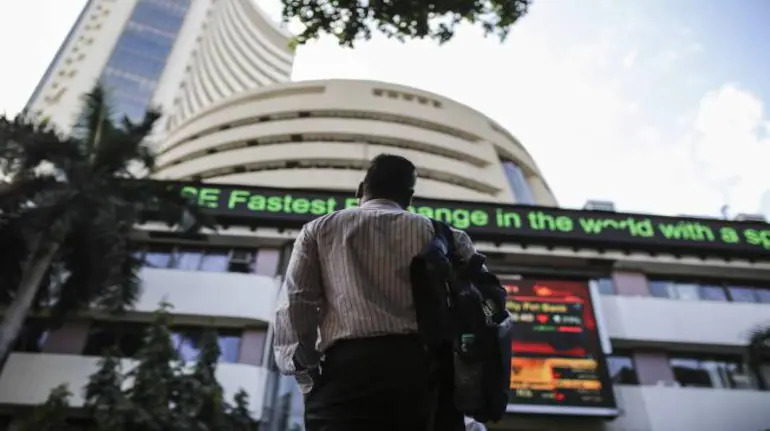Outlook on the global economy looks grimmer with the inversion in the US 10-year and 2-year yield curve, an indicator of recession probability in the US, now the most negative in 22 years. Read more about

The 17 percent rally in the domestic benchmark equity indices since hitting their 52-week low back in mid-June has seen the Indian stock market stretch its premium over emerging market peers.
A foreign investor has to pay twice as much to buy an exchange-traded fund tracking the MSCI India index in terms of valuation as they would for a similar product that follows the MSCI Emerging Market index.
The MSCI India index is quoting a 103 percent premium to the MSCI Emerging Market, a level close to a 15-year high premium of 109 percent hit in January 2021, according to data available on Bloomberg.
Indian equities have historically been unable to sustain such high premiums to their EM peers for an extended period of time. Back in January, when the MSCI India index hit the 109 percent premium mark, it tumbled to a one-year low roughly five months later.
Valuations are likely to become a key talking point among foreign investors as the benchmark Nifty 50 and BSE Sensex are now available comfortably above their long-term average one-year forward price-to-earnings ratio (PE).
Nilesh Shah, chief executive officer at Kotak Mahindra Asset Management, told CNBC-TV18 on August 22 that the Indian markets are now trading at a sharp premium to peers and were likely due to some correction in the near term.
With central bankers at home and abroad showing no signs of slowing the pace of their interest rate hikes, valuations may become even more pertinent for investors. Higher interest rates force investors to become stingier about paying over the top for earnings that may only fructify far into the future.
US Federal Reserve members last week indicated that they will be willing to go for a third 75-basis-point rate hike in September. The Reserve Bank of India’s Monetary Policy Committee suggested it remained firmly on the rate hike trajectory following its policy meeting earlier this month after some suggestions that the central bank may take its fingers off the rate hike button for some time.
In addition to rising interest rates, the recent upswing in one-year forward PE of the MSCI India index from 19.5 times at the end of June to 23.3 times now comes as corporate earnings face downgrades to shrinking margins. stocks become twice as expensive as EM peers
The aggregate earnings per share estimate of the BSE500 constituents saw a 4.5 percent downgrade in forecasts from analysts for 2022-23, a note by brokerage firm IIFL Securities showed.
Outlook on the global economy looks grimmer with the inversion in the US 10-year and 2-year yield curve now the steepest in 22 years, a clear indicator that investors anticipate a recession in the US on the horizon.
“Although we do not believe the US economy was in recession in the first half of 2022, we estimate the risk that this will change over the next 12 months at about one in three,” investment bank Goldman Sachs said in a note.
With the MSCI India index quoting at a near 28 percent premium to its long-term forward PE ratio and the Nifty 50 index faltering at the footstep of the 18,000 points mark, investors may have to decide whether to double down on their investments or start taking some profits. stocks become twice as expensive as EM peers
If one looks at the technical chart of the Nifty 50, the index is now approaching the long-term downward sloping trend line resistance drawn by connecting the peaks since October 2021, said IIFL Securities.“Hence, it is suggested to use this rally in the index to lighten up the longs as the market might see some pressure at higher levels,” IIFL Securities said.

Recent Comments